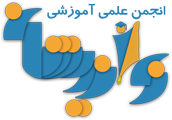جستجو در تالارهای گفتگو
در حال نمایش نتایج برای برچسب های 'unwedge'.
2 نتیجه پیدا شد
-

آموزش گام به گام نرم افزار Unwedge تحليل پايداري گوه هاي معدني در سازه هاي زيرزميني Version 3.0
Alireza Hashemi پاسخی ارسال کرد برای یک موضوع در نرم افزارهای مهندسی معدن
سلام به برو بچه های معدنی از دانشجو و دکتر ومهندس :wubpink: در راستای ادامه آمــوزش گـــام به گام نرم افزار با نواندیشان قصد داریم آموزش نرم افزار Unwedge Version 3.0 رو تو این تاپیک به صورت کاملا کاربردی و تا اونجایی که توانایی دارم با ذکر یک مثال به دوستان عزیزم آموزش بدم، باشد شاهد پیشرفت هرچه بیشتر این رشته در کشورمان باشیم:w72: نکته مهم: اگر استقبال بشه ادامه آموزش انجام میشه اگر نه که کاری بیهوده صورت گرفته واز قدیم گفتن کار بیهوده را که کرد آنکه تمام کرد اما ترتیب مراحل کار: 1_ لینک دانلود نرم افزار رو قرار میدم. 2_توضیح کلی و نحوه کار نرم افزار را توضیح داده. 3_آموزش روزانه و تدریجی منوها نوار ابزارها و محاسبه و تحلیل نتیجه گیری در پایان. 4_پاسخگویی به مسائل وپرسش و پاسخ در تاپیکی جدا تنها اینجا [Hidden Content] مرحله اول لینک دانلود نرم افزار لینک دانلود نرم افزار تو سایت خودمون توسط رئیس معدن محمد رضا گل گذاشته شده در این تاپیک توضیحات کلی در قسمت آرشیو شرکت سازنده نرم افزار [Hidden Content]: 560] [TR] [TD=colspan: 3][/TD] [/TR] [TR] [TD=colspan: 3] From its initial release in the early nineties, Unwedge has been used by hundreds of engineers world-wide, on a variety of projects. It remains one of Rocscience’s best selling programs. Now,Unwedge 3.0 builds upon the simple data entry and visualization capabilities of the old version - it’s analytically more sophisticated and easier to use. Unwedge 3.0 solves difficult wedge stability problems using a combination of block theory and stress analysis, and provides quick answers for engineers with no time to spare. With its leading edge science and major interface enhancements, a typical wedge analysis can now be performed with Unwedge 3.0 in less than 30 minutes. [/TD] [/TR] [TR] [TD=colspan: 3] [Hidden Content] [/TD] [/TR] [TR] [TD=colspan: 3, align: left]Recently, we sat down with Brent Corkum and Warren Stevens from the Unwedge 3.0 development team, and asked them to explain how Unwedge 3.0 will make life easier for geotechnical engineers.RocNews: So gentlemen, what exactly are the top improvements in Unwedge 3.0?Brent: That’s a tough one, because we’ve added a lot - improvements to both its analytical capabilities and its look and feel. But the new Windows based interface is up there – it’s really going to simplify both the analysis and design procedure. We’ve also focused on improving the design capabilities of the software. We’ve added better support models for bolts and shotcrete, the ability to optimize tunnel orientation and to look at different combinations of joints sets forming tetrahedrons from more than three joint sets. Plus, Unwedge 3.0 uses a completely new analysis engine based on Goodman and Shi's block theory, and includes the ability to analyze induced stress around the excavation and the effect on stability. There are new strength models such as Barton-Bandis and the Power Curve, and improvements to the way users can scale and size wedges.Warren: The new interface is definitely going to be the first thing users notice: we’ve got clipboard support and nicer graphics this time around. Editing support is also much easier; for example, joint combinations can be easily changed using a spin control. For the case of multiple joints, every possible combination can be analyzed very quickly using the new Combination Analyzer. There’s a new Integrated Stress Analysis feature, and the Tunnel Axis Plot shows how results change as tunnel orientation changes.[/TD] [/TR] [TR] [TD=colspan: 3] [Hidden Content] Analyzer dialog [/TD] [/TR] [TR] [TD=colspan: 3, align: left]RocNews: What kind of projects will particularly benefit from these enhancements?Warren: Unwedge 3.0 is particularly useful in projects where stress is thought to influence wedge stability, or where you need to analyze a lot of tunnel orientations. An example would be a curving tunnel or spiral ramp. Unwedge 3.0 is also helpful in finding the worst case for any tunnel orientation, any combination of multiple joints, or where tunnel orientation can be changed in order to minimize support costs. Another major improvement is in report generation; now users can create better-looking reports in less time.Brent: Projects that will most benefit from this version include those with wedges formed around drifts and shafts in underground mining, projects where wedges have formed around transportation tunnels, and projects where wedges have formed around underground power or pumping stations.[/TD] [/TR] [TR] [TD=colspan: 3, align: left][Hidden Content] Analysis Option - normal stress contours on wedge planes[/TD] [/TR] [TR] [TD=colspan: 3, align: left]RocNews: Which Unwedge 3.0 interface enhancements will be most helpful to users on a daily basis?Brent: The ability to easily input and analyze both the wedge geometry and the tunnel support system - that's a big one. We've made good use of OpenGL in this version - I think users will appreciate the new graphics that use shading and transparency to visualize both the wedges and tunnel. In general, user interaction is much more interactive, and therefore, a lot simpler to use. Things like the ability to drag wedges along their respective failure direction. Using Tooltips and the Wedge Information pane, users can easily extract just about any analysis information, such as areas, volumes, safety factors or failure modes that they want. Support systems can be easily designed using interactive placement of the support; for example, property definition is based on available bolt and shotcrete systems, making it easy for customers to choose their support system.Warren: I think Clipboard Support is going to prove very helpful - you can generate screen captures for reports very easily, as opposed to the more time consuming method in the older DOS version. For me, that would reason enough to upgrade - it looks nicer and saves a lot of time. That, and the ability to change joint combinations using a spin control - another huge timesaver.[/TD] [/TR] [TR] [TD=colspan: 3] [Hidden Content] Wedge Movement and Data Tips [/TD] [/TR] [TR] [TD=colspan: 3, align: left]RocNews: You indicated that there are a significant number of analytical improvements. Which ones will be most helpful to the typical user?Brent: I'm glad you used the word "typical", because that's what I want to stress to readers. All of these improvements, interface or analytical, have been created based on feedback we've gotten from working engineers. We're constantly asking them, and ourselves, "We think this is a great feature, but will it get used?" The new analysis techniques we've added to version 3 don't just widen the scope of the program, they improve the accuracy of the results. Using Goodman and Shi's block theory, the computation of the perimeter wedges is quicker and more accurate. Plus, an entirely new calculation algorithm was developed for finding and determining the size of possible end wedges. We've also added new bolt models, including cable bolts, grouted dowels with variable grout length, swellex and split-set, and users can now simulate multiple layers of shotcrete with different properties. All these features will greatly improve the accuracy of analysis results.[/TD] [/TR] [TR] [TD=colspan: 3, align: left][Hidden Content] placement of bolt patterns[/TD] [/TR] [TR] [TD=colspan: 3, align: left]Warren: (laughs) Gee Brent, I forgot how much we actually put in there. I think that the most significant, previously unavailable feature is Integrated Stress Analysis. Many of Unwedge 3.0's improvements are "time-savers"; they're interface enhancements that make the program more intuitive and easier to use. But new analytical tools like Integrated Stress Analysis are not only easy to use, they also give users the ability to do more complex, more useful analyses on the effect of stresses around an excavation.Brent: Actually, I forgot to mention pseudo-static seismic modeling; that's in there too. A two-dimensional complete plane strain boundary element model has been added to the program to determine stress effects on the stability of the wedges. Scaling of wedges now accurately reflects the values you define for trace length and persistence. Unlike Unwedge 2.3, which used the trace length values you defined as approximate measures, Unwedge 3.0 accurately accounts for trace lengths. The program will also try to determine the maximum volume wedge with the trace lengths you define.[/TD] [/TR] [TR] [TD=colspan: 3, align: left][Hidden Content] Properties dialog[/TD] [/TR] [TR] [TD=colspan: 3, align: left]RocNews: Sounds like you were kept pretty busy on this version. As developers, what was your biggest challenge with Unwedge 3.0?Warren: Well, right off the bat we knew we were moving away from 2.3's DOS interface, so deciding on the graphical user interface components of the program was time consuming. It's always a challenge to organize your features and make them intuitive to users - stuff like the screen layout, the view management, the toolbar switching and the sidebar. I'm proud of the result - I think it looks good. Also, like Brent mentioned earlier, we learned some new tricks and used them to make the interface richer looking.Brent: The whole thing was a challenge, especially since we wanted to release the software this year, and we'd already spent a good part of it working on the newest version of Slide. But in the end, we completely redesigned Unwedge - from both an analysis and interface perspective. It had to be completely rewritten and the user-interface had to be completely redesigned. And, despite how busy we were, we also added functionality based on some customer requests. They were good ideas, so we felt it was important to incorporate them into the new release.[/TD] [/TR] [TR] [TD=colspan: 3, align: left][Hidden Content] Support Pressure versus Tunnel Axis Orientation[/TD] [/TR] [TR] [TD=colspan: 3, align: left]RocNews: Speaking of our users, any final advice to Unwedge 3.0 users on how they can get the most out of this version?Warren: For beginning users, keep your initial analysis simple and build up the complexity gradually. I encourage this modeling methodology so that you properly understand the different mechanisms of the analysis, such as support and stress effects. For more advanced users, remember to use the Combination Analyzer and the Tunnel Axis Plot - the analysis of multiple orientations used to be manual, now it's automated. This will save you a lot of time. And take advantage of the new Integrated Stress Analysis module.Brent: My advice for newer users is to use the toolbar buttons to switch to the different views, and take note of the view-dependent controls that appear in the side bar. For most tasks in this program, you'll benefit by starting this way. For more experienced users, I think they'll find that with the easier to use interface and the new functionality, you'll be able to solve a broader range of problems, in less time. Come to think of it, I think all users will appreciate that - after all, time is money.[/TD] [/TR] [TR] [TD=colspan: 3, align: left]RocNews: I think that’s a good final thought to end on guys. Brent, Warren – thanks for your information and insight on Unwedge 3.0.[/TD] [/TR] [/TABLE] -

دانلود و معرفي نرم افزار Unwedge به همراه كرك
.MohammadReza. پاسخی ارسال کرد برای یک موضوع در نرم افزارهای مهندسی معدن
معرفي و دانلود نرم افزار Unwedge به همراه كرك اين نرم افزار توسط شرکت ROCSCIENCE تهيه شده است و همانگونه که از نام آن بر مي آيد مربوط تحليل پايداري گوه هاي معدني در سازه هاي زيرزميني مي باشد. نرم افزار UNWEDGE توانايي مدل سازي گوه هاي معدني و فضاي زيرزميني را به صورت سه بعدي داشته و با محاسبات گوناگون از قبيل وزن، ميزان چسبندگي و ... پايداري گوه ها را بررسي مي نمايد. در ضمن با بررسي شرايط استفاده از Rock Bolt و تاثير آن، بهترين حالت نصب و تعداد و ... را مشخص مي كند. حجم: 13Mb پسورد: www.noandishaan.com-
- 2
-

-
- rock science
- unwedge
- (و 6 مورد دیگر)
